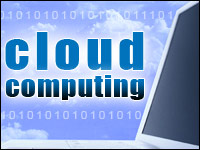
The traditional model of providing software and services to customers through locally managed servers and storage is fast becoming obsolete. It is not only expensive — the cost of buying and maintaining an ever-growing cadre of servers alone is prohibitive — but also counterproductive. It prevents companies from focusing resources on the functions necessary to maintain and grow the business, like product development, marketing and customer relationship management.
For many businesses, the increasingly popular answer to storage concerns is cloud computing — a pay-as-you-go scheme that lets a company offload its computing resources, such as storage, processing power, software and services, to a network of servers located remotely (commonly called “the Cloud”). The cloud can either be private or hosted by a major provider such as Amazon, Google or Microsoft. With this paradigm, resources are delivered to users over the Internet on demand.
In today’s economic environment, cloud computing makes a lot of sense. Companies can avoid maintaining an IT infrastructure that requires purchasing and troubleshooting ever-larger legions of servers and other equipment, and the pay-as-you-go method helps them effectively manage their finances. In fact, analyst firm IDC expects spending on IT cloud services to nearly triple from today’s levels, reaching US$42 billion by 2012.
Simply having a cloud set-up to store corporate data is just the tip of the iceberg, however. The real value is in marrying the concept of the cloud with Software as a Service (SaaS), or on-demand software. Many business owners have come to recognize that these technologies can help improve customer satisfaction, fine-tune pricing and marketing approaches, and reduce costs. However, many fail to realize, for a variety of reasons, that the cloud is not just a money saver; it can be a money producer.
Increasing Revenue Streams: SaaS and the Cloud
While companies of all sizes are beginning to see the benefit of moving their data to the cloud, many more have already moved to a SaaS distribution model for their key applications, such as billing. By doing so, they have discovered that they can deliver software to their customers quickly and at lower cost, while increasing customer satisfaction and improving customers’ security and technology concerns.
By combining the SaaS delivery mechanism with the benefits of the cloud, companies can realize even greater efficiencies and possibilities to provision their services. What’s more, companies have access to much better usage tracking and reporting, which in turn leads to more effective and profitable billing tiers.
Additionally, by uniting SaaS with the cloud, companies have many more opportunities to increase revenue than ever before. With access to real-time information on how different customers are using the software, it becomes a fairly simple exercise to create different pricing schemes for different user groups and decide how best to construct pricing. Evidence may show, for example, that for one company, the most profitable and user-accepted pricing plan would combine a monthly charge with a charge per seat. Yet another company might find that pricing based on levels of use (utility-based billing) would be more appropriate. Either way, the ability to see how customers are using software provides pricing flexibility, which in turn leads to much greater revenue potential.
Companies can aim even higher than pricing by thinking bigger. For example, when you offersoftware as a service via the cloud, it gives software developers and other third parties the opportunity to create market-specific products based on your offering, as well as plug-ins, extensions and even new features of your core product.
Each such development not only increases revenue for your base offering, but also can provide you with a recurring revenue stream via a percentage of every sale the third-party developer makes. Take, for example, a gas station owner who uses a company’s SaaS-based accounting offering as a launching pad for an application specific to gas stations’ needs. That niche product can be a source of income for years to come.
One company that has done this with extraordinary success is Apple, which has created a “cloud marketspace” for delivery of mobile software. Apple has not only profited greatly from direct sales, but also spawned a huge industry of independent software developers writing successful applications for the iPhone, every sale of which earns Apple a percentage.
In fact, third-party developers have provided the App Store with thousands of paid and free iPhone applications. As of April 24, 2009, Apple confirmed that users had downloaded more than 1 billion applications from its App Store.
Winning Combination
Managing and growing a successful business requires accurate information, and combining on-demand software and services with the cloud provides just that. The automation afforded by this method provides myriad benefits. Better visibility into customers’ buying and usage patterns, combined with comprehensive analytics, translates into more successful transactions, more repeat business, and greater opportunities for capitalizing on the software and services already in place.
In this economy, the cost savings afforded by this approach can’t be ignored. Little or no delivery cost, greater marketing capabilities and power, and a chance to expand the depth and breadth of software and services via third parties is a combination that creates satisfied customers, long-term revenue, and a much greater profit potential.
Ed Sullivan is the founder and CEO of Aria Systems, a Software as a Service (SaaS) billing and customer lifecycle management provider.



































Social Media
See all Social Media